How to care for gooseberries in autumn and properly prepare for winter
In order to harvest rich yields of delicious berries every year, the plant needs to be timely taken care of not only during the growing season, but also after its fruiting, as well as harvesting.
So what do you need to know about autumn gooseberry care?
What activities are included in the list of basic ones for preparing a berry bush for winter?
You will find the answer to these and other questions by reading this detailed material to the end.
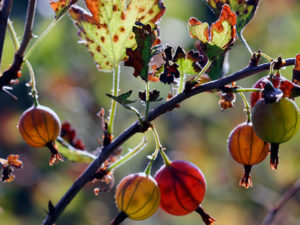
Content
- 1 What to do with gooseberries in autumn after fruiting: how to properly prepare a berry bush for winter
- 2 Fertilizing gooseberries after fruiting and harvesting
- 3 Autumn pruning of gooseberries after fruiting
- 4 Preparing gooseberries for winter: mulching and shelter for the winter
- 5 Popular mistakes in autumn care and preparing gooseberries for winter
What to do with gooseberries in autumn after fruiting: how to properly prepare a berry bush for winter
In order for the shrub to survive the winter safely and in the next season to please you with a bountiful harvest, at the end of its fruiting, you need to carry out several autumn activities in order to properly prepare it for winter:
- At first,clear and renew the mulch in the trunk circle or simply loosen (shallow, maximum - 3-5 cm);
Updating the trunk circle, namely removing the old mulch layer (including cleaning it from fallen leaves) is necessary to cleanse it from various wintering pests and diseases. After that it is recommended form a new hole for easy watering and fertilization, and then again mulch the gooseberry.
Advice! All mulch and fallen leaves that you get from under the bush should be put into compost or burned (in case the bush is sick with something).
- Execute top dressing with phosphorus-potassium fertilizer.
Advice! The site has material about feeding currants, in essence, the technique is the same.
- Conduct shrub pruning (immediately after harvest and in autumn).
Advice! The site has a separate detailed article about autumn pruning of gooseberries after fruiting.
- If the gooseberry has grown too much (began to interfere), his fruiting has noticeably decreased, and he generally stopped developing - it's time for him plant or transplantbefore multiplying in one of several ways.
By the way! The site has a detailed article about how to transplant currants correctly in spring, summer and autumn (the technique is basically the same).
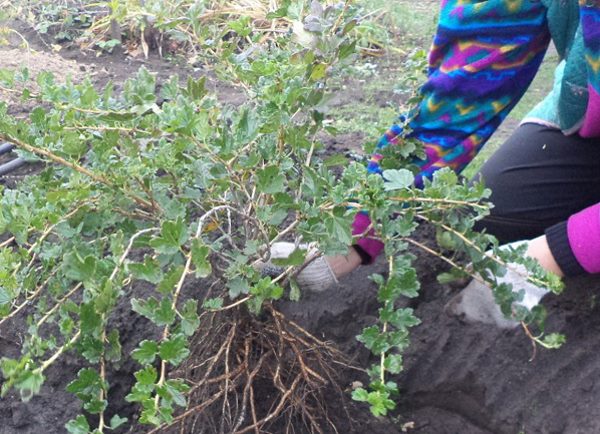
- Conduct eradicating autumn spraying.
Goal - eradicate all remaining pathogenic fungi and insect pests (including their eggs) so that they could not overwinter on / in the bark and near-trunk circle.
Timing - spraying is already carried out after the leaves fall.
Means - most often used as preparations for the autumn processing of gooseberries inkstone in combination from urea either just Bordeaux liquid... And in the summer (in August) you can use colloidal sulfur.
In general, berry bushes are usually sprayed with from early spring: for the first time pour boiling water over gooseberries (similar to currants), and then perform several treatments with various fungicides (agents against diseases) and insecticides (against pests).
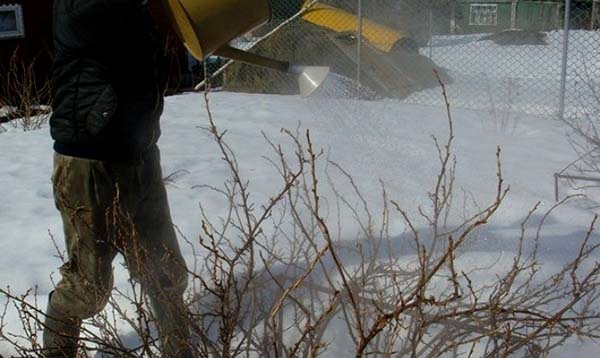
- Carry out water charging irrigation.
If the autumn is dry, then it is highly desirable to carry out water-charging irrigation, i.e. soak the earthen lump to a depth of 15-30 cm.
If autumn pampers with frequent and heavy rains, then you do not need to do this.
- Insulate for the winter (mulch or cover slightly).
Video: caring for gooseberries after harvesting in the fall
Fertilizing gooseberries after fruiting and harvesting
To make the plant easier to survive the winter, as a rule, it is recommended to carry out the autumn feeding with phosphorus-potassium fertilizers (without nitrogen or with its minimum amount).
Note! It is advisable to fertilize immediately after harvest, i.e. even in summer (at the end of July-August).
Thus, choosing what you can feed the gooseberries in the fall, you can choose the following mineral fertilizers:
- superphosphate + potassium sulfate (potassium sulfate);
- potassium monophosphate;
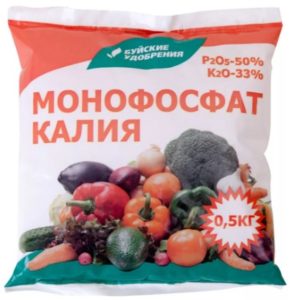
- any ready-made specialized "autumn" fertilizer.
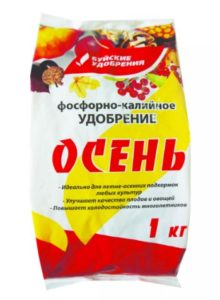
By the way! More information about when and what to feed gooseberries in spring, summer and autumn (after fruiting), you will find in this material about feeding currants (because they are similar).
Autumn pruning of gooseberries after fruiting
It's no secret that over time, the gooseberry grows quickly enough, begins to shade itself, it hurts more often and its fruiting worsens. Therefore, every year, extra branches must be cut off, as well as form a bush. And already anti-aging pruning is recommended starting from 5-6 yearsdeleting the oldest (5-6 year old) branches.
Gooseberry pruning after fruiting and harvesting can be divided into two steps.
- Immediately after harvest (back in the summer) removed withered and diseased branches, i.e. spend sanitary pruning.
- A rejuvenating and shaping pruning gooseberry is already taken in the fall, and it is desirable after the leaves fall, but before the onset of frost and a stable negative temperature.
Worth knowing! Basic trimming gooseberries perform, as a rule, exactly after fruiting (in autumn), a in spring do only corrective, or rather sanitary pruning after winter.
Of course, if you did not have the opportunity to prune gooseberries in the fall, then it is better trim in springthan not trim at all.
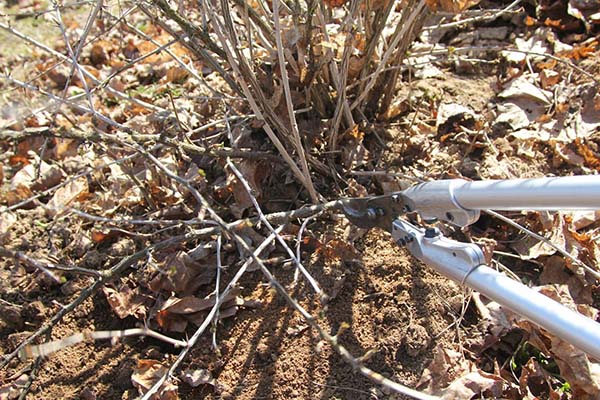
Video: how to trim gooseberries correctly - rejuvenating autumn pruning
Preparing gooseberries for winter: mulching and shelter for the winter
Surprisingly, despite its prickly appearance, gooseberries are considered a slightly more thermophilic and slightly less winter-hardy shrub than currants (but only slightly!). Therefore, in very frosty and little snowy winters, damage (freezing) of the vegetative and generative organs of the gooseberry can occur, especially when planting in open or low damp areas, northern or eastern slopes.
Accordingly, if in your region there are often very cold and snowless winters, then so that the gooseberry root system does not suffer from freezing of the soil, you need to slightly insulate it.
How to insulate?
Mulch the trunk circle with a 5-10 cm layer of peat, humus, compost (will be at the same time a long-lasting fertilizer), leaves of ornamental shrubs or trees (only not fruit), sawdust or hay (straw), mowed grass from the lawn (for example, left after autumn preparation / mowing the lawn for winter).
Advice! You only need to lay mulch on a still warm soil. If you do this already on frozen ground, then the effect of such mulching will be minimal or even negative.
If you intend cover the gooseberries for the winter with a special covering material, then we immediately warn you that this is a completely pointless undertaking after all, even with a significant decrease in degrees, the layer of mulch will be quite enough, in extreme cases you can use snow.
In the sense of "snow"?
If you live in a private house (you can hardly get to the dacha if it snows already), then you can cover the gooseberries for the winter with the snow itself. First, just throw it under the bush, and then fill it completely.
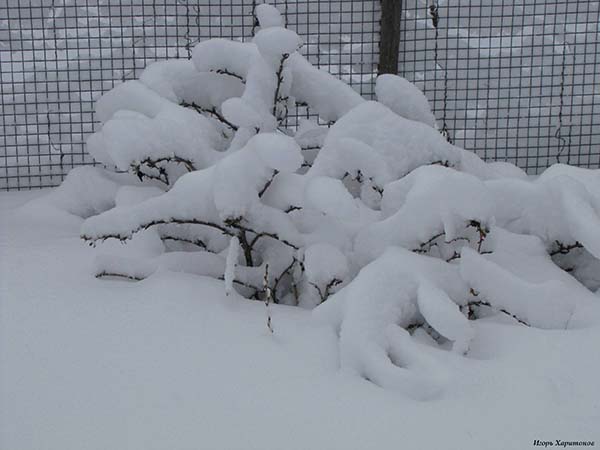
Popular mistakes in autumn care and preparing gooseberries for winter
All people are prone to make mistakes, and even the most experienced gardeners sometimes make offensive mistakes when caring for gooseberries after fruiting, at the end of summer, as well as during autumn preparation for winter:
- Apply nitrogen-containing fertilizers in the fall - feeding with fresh manure in the autumn will provoke an increase in the growth of branches and green mass, which will negatively affect wintering, not allowing the plant to retire qualitatively.
However, nitrogen fertilization is allowed in the second half of summer (in July, but not in August)if by this time you have already harvested.
- At all do not feed the bush, including in the spring.
- Wrong or at all do not prune gooseberries.
- Do not cover, or rather do not mulch shrub for the winter - because of this, the root system of the shrub can freeze very much, which in some situations leads to the death of the plant.
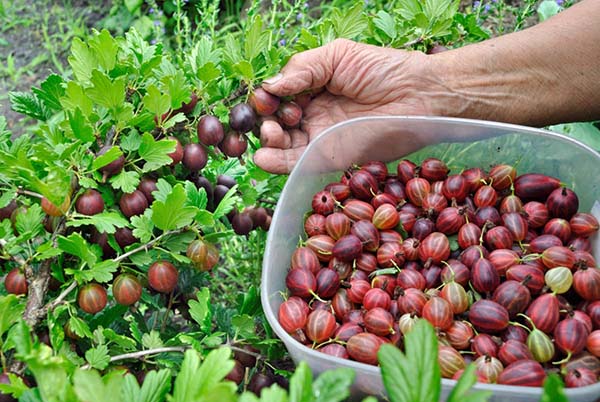
Well, now you know what needs to be done with the gooseberry after its fruiting: how to care for it in the fall and properly prepare it for winter. It's not all that complicated, but the effect will be more than significant.
Video: caring for gooseberries in the fall, what you need to do before winter

